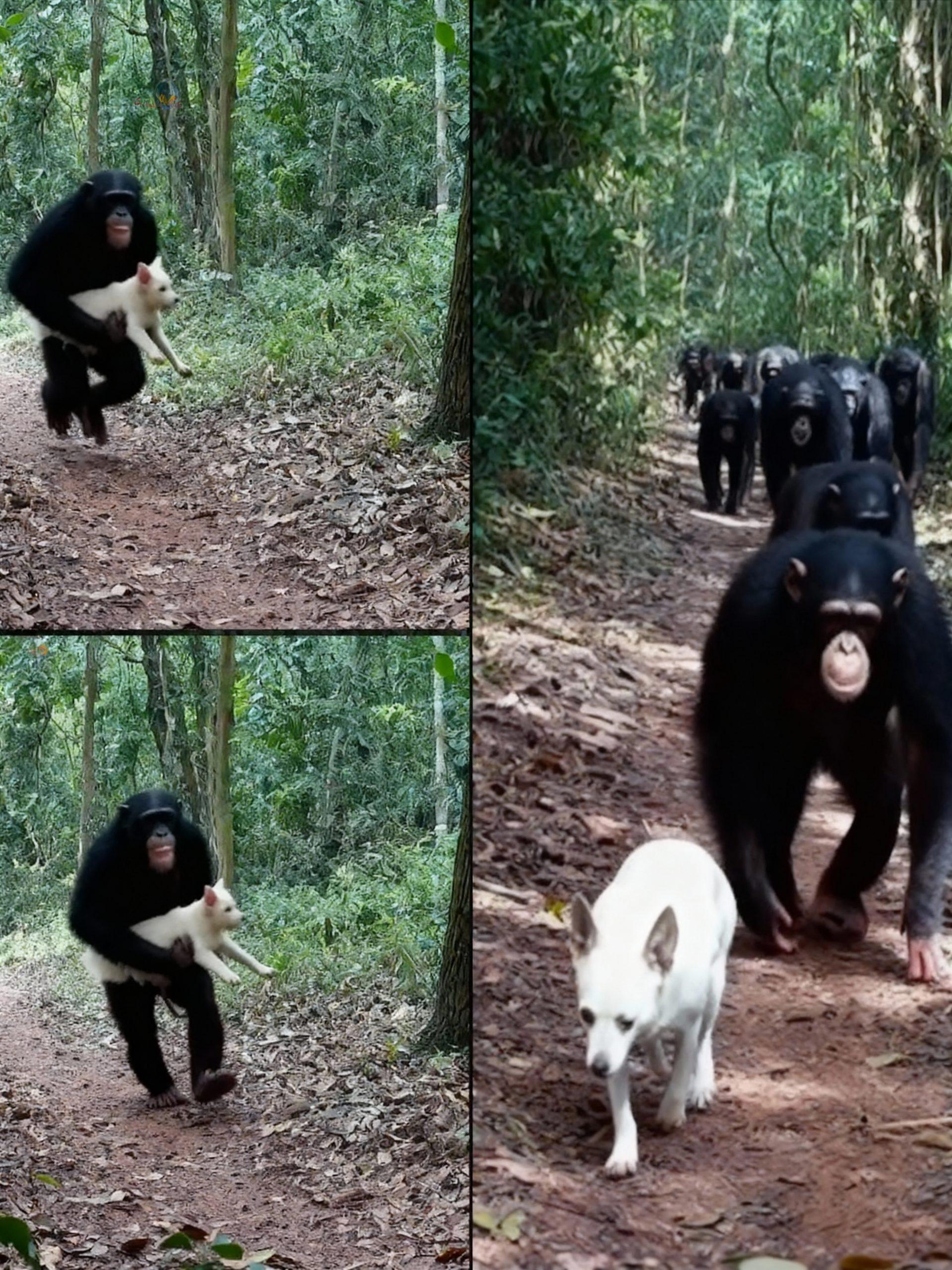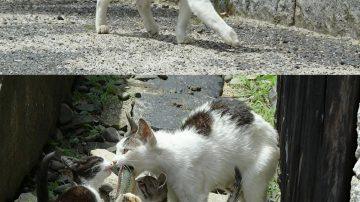In the dense, emerald heart of the Congolese jungle, where the whispers of ancient trees guard untold secrets, a narrative far stranger than fiction began to unfold. It started with a routine patrol of camera traps, usually set to deter poachers or monitor elusive wildlife. But what primatologist Dr. Aris Thorne and his team discovered on their latest data retrieval sent shockwaves not only through the scientific community but into the very fabric of their understanding of interspecies relationships. The footage, initially dismissed as an anomaly, revealed a powerful, adult chimpanzee, later identified as ‘Moke,’ bounding through the undergrowth. In his arms, held with an almost tender possessiveness, was a small, white dog — a common village stray, known for its gentle demeanor among the market vendors. Moke’s expression, a wide, almost triumphant grin, was unmistakable. The initial reaction among the local villagers was a mixture of panic and sorrow, fearing the worst for the beloved canine, certain it had met a tragic end. Yet, this was merely the prelude to an even more astonishing chapter.

Days turned into anxious nights, and the fate of the dog remained a mystery, fueling local legends and scientific debate. Then, another sighting emerged, equally incredible. High in the canopy, silhouetted against the filtering sunlight, Moke was observed once more. This time, the small white dog was not being carried but was resting serenely beside him on a thick branch, seemingly unperturbed and completely at ease. There was no sign of distress, no fear in the dog’s posture, only an undeniable sense of trust. This dramatic twist challenged every preconceived notion about predator-prey dynamics and primate behavior, leaving experts baffled and villagers in awe.







